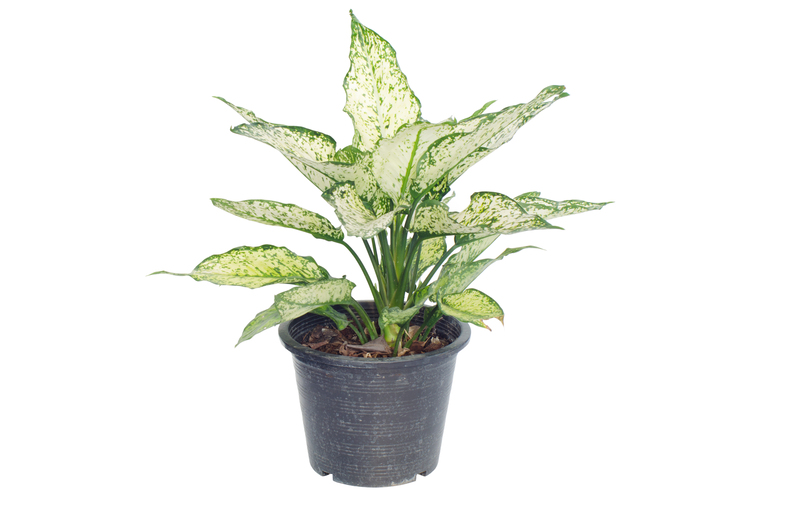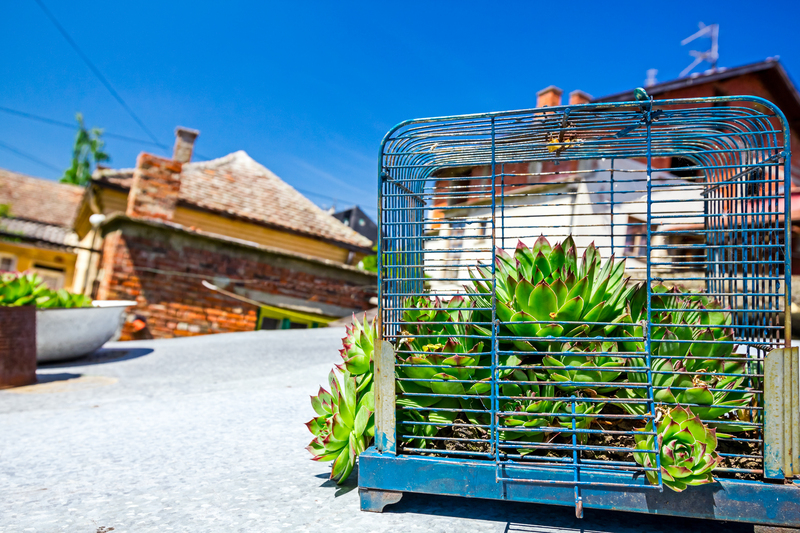Fostering Fun and Growth in a Kid-Friendly Garden
Posted on 04/07/2025
Gardening has long been a source of joy, inspiration, and education for people of all ages. Introducing children to a kid-friendly garden can encourage a love for nature, promote hands-on learning, and provide a joyful family activity. Building a child-friendly garden means designing an environment that is both fun and educational, allowing kids to discover the wonders of plants, insects, and the changing seasons. In this comprehensive guide, we'll explore how you can create an engaging and safe kids' garden that fosters imagination, responsibility, and growth.
Why Create a Kid-Friendly Garden?
Children are naturally curious and often delight in outdoor play. A child-friendly gardening space nurtures curiosity, encourages movement, and strengthens connections to the environment. Here's why you should foster gardening with kids:
- Educational Opportunities: Kids learn about plant biology, life cycles, and ecosystems.
- Physical Activity: Digging, planting, and harvesting promote gross and fine motor skills.
- Social and Emotional Growth: Working together builds cooperation and confidence.
- Responsibility: Caring for plants instills a sense of accountability.
- Healthy Eating: Growing fruits and vegetables encourages better nutrition.
- Mental Wellbeing: Time outdoors is proven to reduce stress and boost mood.
A fun kid-centric garden is more than just a playground - it's a place for personal growth and family bonding.

Planning Your Kid-Friendly Garden
Choosing the Right Location
A successful children's gardening area requires safety, accessibility, and the right environment for plants to thrive. Consider:
- Visibility: Keep the garden within sight from the house or main play areas.
- Sunlight: Most plants require at least 6 hours of sun. Pick a sunny, sheltered spot.
- Accessibility: Level ground and paths make the space easy for little feet and wheelbarrows.
- Proximity to Water: Easy access to a water source for frequent watering and messy play!
Design Elements That Encourage Fun and Learning
A garden designed for children should be inviting and interactive. Consider these elements:
- Paths and Borders: Use stepping stones, logs, or soft mulch for safe, playful navigation.
- Raised Beds: Elevated garden beds are easier for kids and help define planting zones.
- Color and Texture: Mix vibrant flowers with hands-on plants like lamb's ear or silver sage.
- Sensory Zones: Create areas for touch, sight, sound, smell, and even taste!
- Secret Spaces: Hideaways made from sunflowers, willow, or bean pole teepees foster imaginative play.
Tip: *Involve children in the planning process; let them choose colors, plants, or design features to make the space truly theirs.*
Essential Features of a Kid-Centric Garden
1. Safety First
When creating a garden for kids, safety is paramount. To ensure the wellbeing of your children:
- Avoid toxic plants: Steer clear of species like foxglove, nightshade, or lily of the valley.
- Choose non-slip surfaces: Soft grass, bark mulch, or rubber matting reduce the risk of falls.
- Use child-sized tools: Blunt, light, and easy-to-handle tools foster independence and prevent injuries.
- Secure boundaries: Fences or hedges keep children within safe play areas.
- Store chemicals and tools: Keep all fertilizers, pesticides, and sharp tools locked away when not in use.
2. Engaging Plant Choices
A kid-friendly garden comes alive with interactive and fast-growing plants. Select varieties that offer sensory delights, quick rewards, and safe exploration:
- Sunflowers: Tall, fast, and dramatic; perfect for measuring growth.
- Snapdragons and Nasturtiums: Colorful, edible flowers kids can pick and taste.
- Herbs: Basil, mint, and chives are easy to grow and smell wonderful.
- Pumpkins and gourds: Encourage curiosity with pumpkins that can be carved or decorated come autumn.
- Peas, beans, and cherry tomatoes: Quick, easy, and rewarding edibles.
- Sensory plants: Lamb's ear, silver sage, or lavender for tactile exploration and fragrance.
3. Creative and Playful Additions
Bring magic into your children's garden with features that inspire creativity and play:
- Garden art: Wind chimes, stepping stones, gnome statues, or painted rocks.
- Water features: Birdbaths, small fountains, or a mud kitchen for messy fun.
- Building zones: Space for fairy houses, bug hotels, or sand and soil construction.
- Garden hideouts: Teepees made from sunflowers or beans, tunnels of willow or bamboo.
- Obstacle/adventure course elements: Balance logs, stepping stones, or climbing plants on obelisks.
Tips for Encouraging Kids in the Garden
Make Gardening a Family Affair
Children learn best through observation and participation. Make gardening a fun, shared experience:
- Assign tasks: Age-appropriate jobs like watering, weeding, or harvesting give children a sense of purpose.
- Celebrate small successes: Mark the first sprout, flower, or harvest with photos or stories.
- Allow creativity: Encourage kids to paint pots, design plant markers, or invent garden stories.
- Be patient: Let children make mistakes and learn from them rather than striving for perfection.
Teach Through Play and Projects
Combine play and learning in your kid-friendly gardening adventure:
- Nature scavenger hunts: List textures, colors, or insects to find.
- Garden journals: Track growth, draw pictures, or record wildlife sightings.
- Cooking with kids: Use garden harvests in simple recipes like salads or smoothies.
- Plant experiments: Compare different soils, light, or watering conditions to teach science in action.
- Art in the garden: Use leaves, flowers, and rocks for crafts and decorations.
Fostering Growth: Life Lessons from the Garden
A child-friendly garden is the ultimate classroom without walls. Beyond plants and mulch, it offers life lessons that help children grow into responsible, compassionate, and resourceful adults.
- Patience: Plants take time to grow, teaching kids to wait and care over the long term.
- Perseverance: Overcoming setbacks like pests or weather builds resilience.
- Observation: Spotting small changes in the garden hones focus and attention to detail.
- Problem solving: Finding out why a plant isn't thriving encourages inquiry.
- Community: Sharing a garden builds communication and sharing skills among siblings and friends.
*Every seed planted is an opportunity to cultivate responsibility and wonder in the next generation.*

Maintaining Your Children's Garden Year-Round
A fun and safe garden for children doesn't go dormant after summer. Keep kids engaged throughout the seasons:
Spring Activities
- Start seeds indoors: Watch sprouts emerge and learn about germination.
- Prepare beds: Let little ones help with raking, weeding, or adding compost.
- Plant cool-season crops: Lettuce, spinach, and peas can go in early for quick results.
Summer Fun
- Watering and harvesting duties: Assign daily jobs to encourage routine.
- Garden picnics: Create a magical meal spot under sunflowers or next to the bean teepee.
- Encourage pollinators: Watch bees and butterflies, and learn about their role in the garden.
Fall Projects
- Pumpkin harvest and carving: Celebrate the autumn bounty.
- Collect seeds: Teach about plant cycles and prepare for next year.
- Mulching and clean-up: Guide kids in protecting the garden for winter.
Winter Inspiration
- Plan next year's garden: Browse catalogs, dream up themes, and sketch maps.
- Nature crafts: Use branches, pinecones, and dried flowers for indoor art.
- Monitor wildlife: Watch for birds, squirrels, and other visitors in the winter yard.
Conclusion: Sowing Seeds for Lifelong Growth
Cultivating a kid-friendly garden is a profound investment in the health and happiness of your family. It offers a foundation for exploration, responsibility, and lifelong learning. By thoughtfully designing a garden that invites hands-on activity, embraces safety, and sparks the imagination, you lay the groundwork for years of fun, discovery, and growth.
Let your children dig, play, and dream in a garden made just for them--and watch as both the garden and your young gardeners flourish together. Whether you have acres of backyard or a few pots on the patio, every family can foster fun and growth through gardening with kids. Happy growing!

